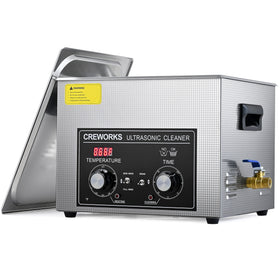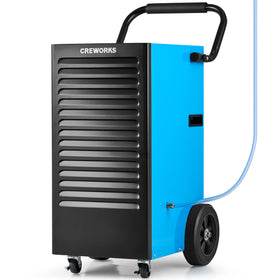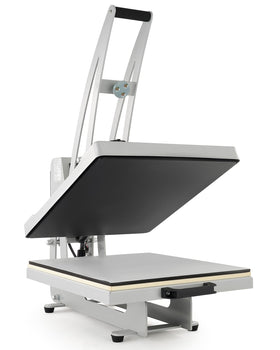With over 10000+ orders
With over 10000+ orders
Not every material is a great fit for heat pressing, and even when it is, that doesn’t mean you can just press and go. In addition to knowing how to use a heat press machine, you must know which materials are good for heat pressing and which are not.
And believe me, this is something I have learned the hard way! When it comes to personalized mugs or custom shirts, you should understand what you can heat press and how you can perform it correctly.
In this guide, I’ll walk you through the heat press settings for polyester, nylon, leather, and wood, and show you how to get crisp, clean results every single time.
So, let’s take a look at different materials and their requirements.

This is a quick-reference list of materials I developed of the most frequently requested materials. If you're wondering things like "can you heat press polyester?" or "can you heat press nylon?", you’ll find your answers here.
| Material | Yes/No | Ideal Temperature | Time | Pressure | Protective Layer | Pre-Pressing |
| Polyester | Yes | Low to medium (270–305°F) | 10–15 sec | Medium | Yes | 2 minutes |
| Nylon | Yes (with care) | Low (250–275°F) | 5–10 sec | Low | Yes (Teflon or parchment paper) | No |
| Leather | Yes | Medium (280–320°F) | 10–15 sec | Medium | Yes (Teflon sheet) | Optional |
| Wood | Yes | High (300–350°F) | 15–30 sec | Medium-High | Yes | Yes (remove moisture) |
Yes, you can heat press polyester, but it requires finesse. However, polyester burns easily, so it is not advised to use high heat. Always stay between 270 and 305°F.
Pro Tip: Pre-press it at a slightly lower temp for 2 minutes. This helps the vinyl stick better and last longer.
Wondering if you can heat press nylon without ruining it? The answer is yes, but be careful.
Nylon is super heat-sensitive, so it is advised to use the lowest possible temp that will still activate the adhesive: usually around 250-275°F.
Use a 5-10-second timer, and the pressure should be light. A Teflon sheet or parchment paper should always be put between the press and fabric.
Avoid preheating nylon; it doesn’t handle prolonged heat well. Rather, straighten it with your hands, and then press.
If you're customizing wallets or leather patches, you're in luck; you can heat-press leather.
I set my machine to 280-320°F with medium pressure and press it at approximately 10 to 15 seconds. A Teflon sheet is a must here; it protects both your leather and your heating platen.
Some leathers don’t require pre-pressing, but I usually test a small corner to see how it reacts. When it turns dark or warms up, change the temperature.
Tip: Faux leather (PU or synthetic) is even more sensitive, so treat it more like nylon.
Yes, you can heat press wood, and it looks incredible, especially when you’re making coasters, signs, or decor.
I usually go for 300-350°F, medium to high pressure, and 15 to 30 seconds, depending on the thickness. Make sure the wood is dry and smooth, and definitely pre-press it to remove moisture that can cause bubbling.
To prevent burn marks, a protective sheet should be utilized and applied firmly. HTV or sublimation paper will give you effective, permanent outcomes.
Some materials just weren’t meant for heat. Here’s what I avoid:
Always test a small sample if you’re unsure, and check the manufacturer’s care label when working with garments.
When you're working with different surfaces, from heat pressing polyester to wood, you need a machine that can handle it all. So, these are my go-to picks:

This 8-in-1 Heat Press is a powerhouse built to do it all: T-shirts, mugs, hats, plates-you name it. It comes with 7 attachments, heats up to 482°F, and rotates 360° for safety. I love the intuitive LED display and that it’s ready to handle curved or flat surfaces. You also get free T-shirts and transfer paper to start right away!
Perfect for:

This 5-in-1 heat press is a slightly smaller setup with 4 attachments, but still powerful at 900W and just as versatile. It’s great if you’re starting out or have limited space. Same 360° rotation, same max temperature—and it gets the job done beautifully on nylon, leather, and wood.
This mini heat press is best for detailed work, sleeves, or baby clothes. It’s lightweight, easy to maneuver, and heats up to 410°F. The protective base and included spray bottle make it a great starter tool for DIYers and pros alike.
Achieving excellent results using a heat press can be obtained not only by the machine itself but also by gaining knowledge of the material. It is all about the perfect temperatures surrounding the heat to the proper protection layers.
So, yes, you can heat press polyester, nylon, leather, and wood; you just have to do it right.
Check out Creworks' selection of heat press machines and get the right one for DIY, small business, or gift business. Whether you're customizing mugs, tees, or wood signs, our machines are built for creativity, safety, and serious results.












Leave a comment